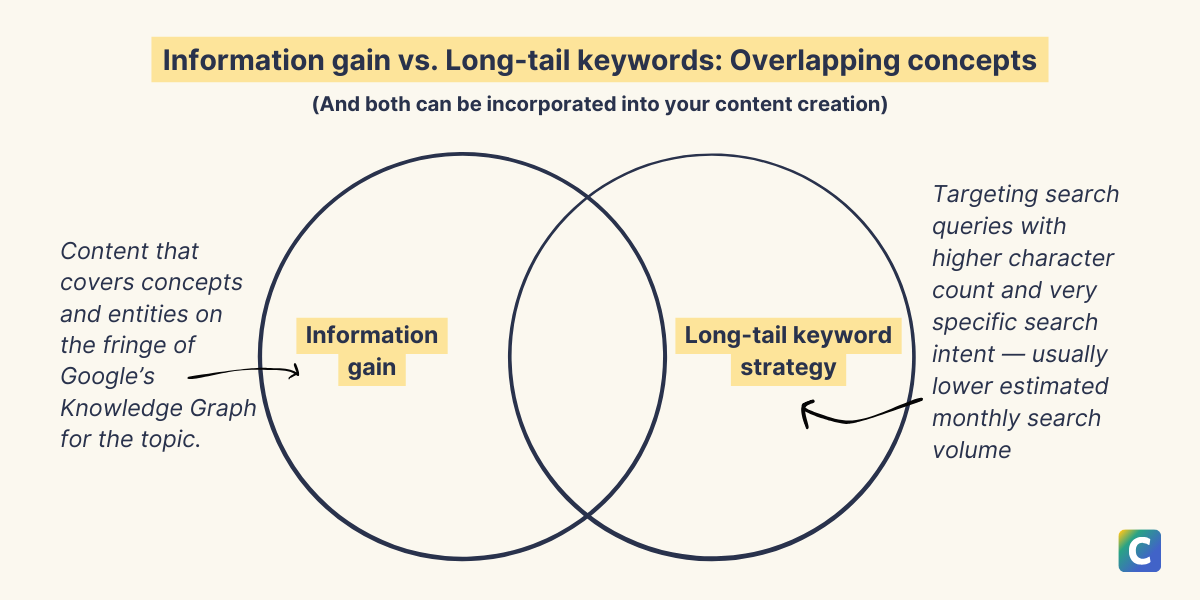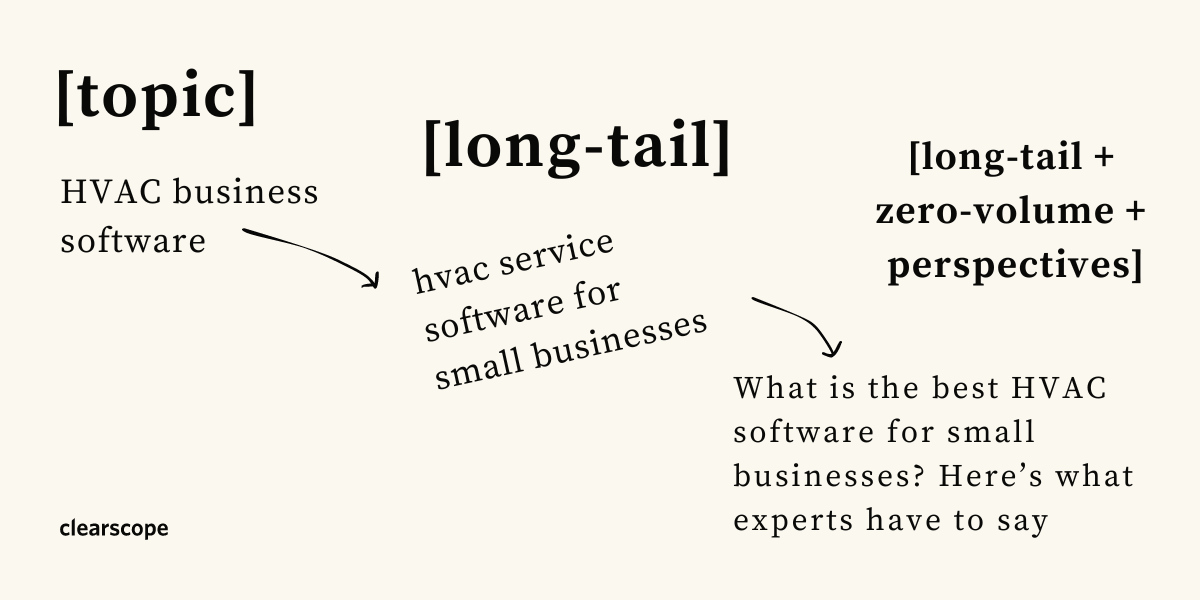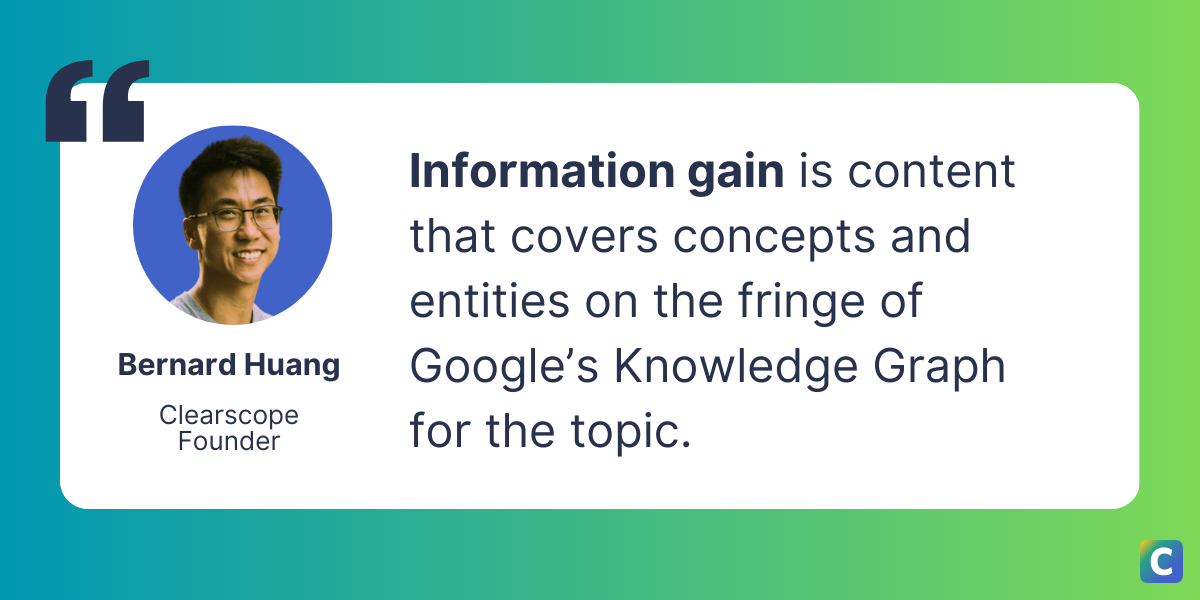Information Gain SEO vs. Long-Tail Keyword Strategy: What's the Difference?
Topic: SEO
Published:
Written by: Bernard Huang
While targeting long-tail keywords or focusing on “pain point SEO” have been staples strategies for successful content-led SEO over the past few years, a new concept is buzzing in the SEO arena: information gain.
And it’s one we all need to be paying attention to, especially with E-E-A-T guidelines, search engine algorithm changes, the advent of AI-generated answers to search queries—the list goes on.
But plenty of SEO and content experts seem to be tangled up in these concepts, and we’re all asking questions like:
What’s the difference between building topical authority and creating information gain?
How is information gain different from the E in experience?
What the heck is Ranch-Style SEO? (Is it a sauce? A house?)
Isn’t this all the same idea?
Should I just throw my laptop in the nearest body of water and give up on SEO forever?
Before you commit to pivoting any of your content creation methods (and you likely should)—or drowning your laptop (which you shouldn’t)—it’s important to get these concepts ironed out and understand how you can benefit from each of them.
What is the difference between information gain and a long-tail keyword strategy?
Much like topical authority vs information gain, targeting long-tail or low-volume keywords isn’t the same as producing information gain content.
So even if your current content-led SEO strategy focuses on building and maintaining topical authority and/or owning long-tail keywords, it’s likely you still need to pivot your strategy a bit to ensure you’re creating information gain to gain the attention of Google Search.

The concepts of creating information gain and implementing a long-tail keyword strategy are distinct yet can complement each other.
Example of information gain vs. long-tail keyword concepts
Here’s an example to illustrate why—let’s pretend we’re doing SEO for a SaaS company for HVAC businesses.
On the day that I’m writing this, [hvac business software] has an estimated 1K+ U.S. monthly search volume and a medium keyword difficulty score.
As a long-tail counterpart, [hvac service software for small business] has an estimated 90 U.S. monthly search volume and a lower keyword difficulty score.
A piece of content that is focused on adding information gain in the topic of [hvac business software] for a long-tail keyword like [hvac service software for small businesses] could focus on a zero-volume long-tail keyword like [what is the best HVAC software for small businesses?] and could take a few different angles.

To prioritize information gain, in your content you could include:
An in-depth interview with a happy client who saw great success from making the transition along with new data you gathered from client surveys
An analysis on the ROI for streamlining your small HVAC business with software with a couple of sharp, original infographics
Interviews with 6 top home upgrade and HVAC experts in your niche on their favorite options
Reviews, true stories, and testimonials you’ve gathered from your users over the years woven into an educational piece
A landing page that offers a very strong, thorough price comparison of your product and your competitors, along with the ROI and testimonials to showcase why your product is the best choice
But here’s the caveat.
At Clearscope, we define information gain as “content that covers concepts and entities on the fringe of Google’s Knowledge Graph for the topic.”

To simplify, information gain SEO is creating new information about existing topics or covering consensus content from fresh, new perspectives with first-party or primary-sourced information.
But… there’s nothing new under the sun, right?
It really is a challenge to create or say something brand-new about a topic that’s seemingly been covered from every angle.
And that’s why targeting long-tail keywords, which historically have been known for less content coverage or competition, is still an important part of a competitive SEO strategy.
One of the best ways to go after the “fringe edges” of Google’s Knowledge Graph is to search for topics that haven’t been covered at length.
There are a few ways ways you can do this:
Go after zero-volume keywords.
Use a tool (like Clearscope) to discover unique information-gain-opportunities.
Know your audience and industry so well that you can create content ahead of the curve.
You can read more about this in the three-part plan that shows you how to start incorporate information gain into your existing content.
How to Implement Ranch-Style SEO: 7 Successful Frameworks
Learn 7 successful content frameworks for Ranch-Style SEO, the future-proof, perspective-driven SEO strategy that’ll take your site into the next era of search.
Read moreInformation Gain in SEO: The Guide to Convincing Yourself, Team, and Clients to Rethink Current Strategies
What is information gain? Why is everyone talking about it? This is the guide you need to persuade yourself, your team, and your clients to reassess your current strategy to include info gain in your content.
Read moreKeyword Mapping: What It Is and How to Map to Your Purchase Journey
Learn what keyword mapping is and how to implement it for your website.
Read more